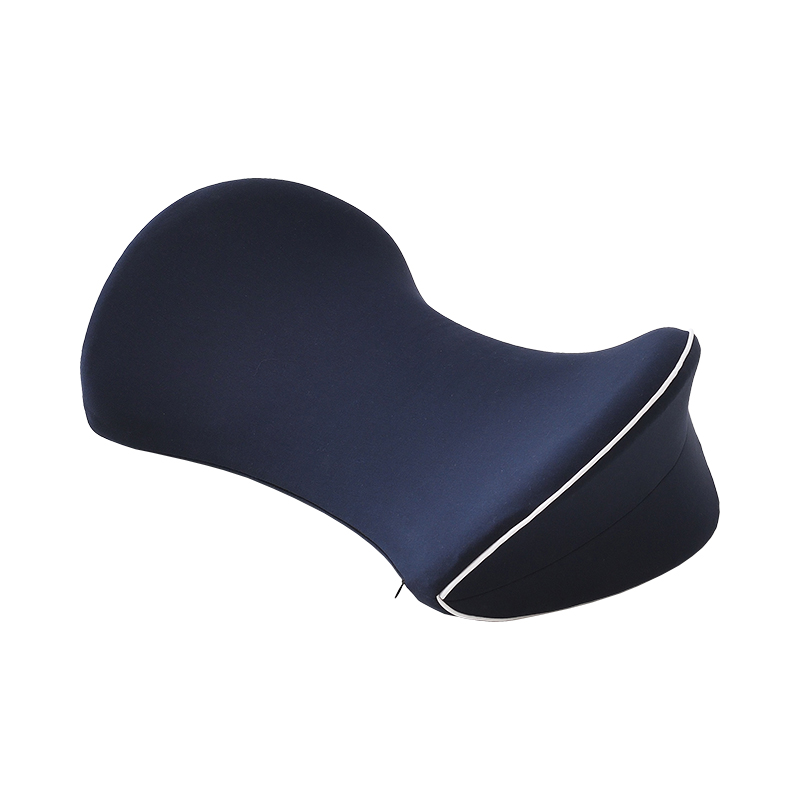Memory Foam Back Cushions are designed to provide optimal support based on the natural curve of the human spine, thereby relieving pressure, improving sitting posture and reducing discomfort caused by long periods of sitting. The following are the key elements and principles of its design:
Conform to the natural curve of the human spine
S-shaped curve of the spine: The human spine naturally presents an "S"-shaped curve, including cervical lordosis, thoracic kyphosis and lumbar lordosis. Memory foam cushions need to be able to adapt to this curve to provide precise support for different parts.
Zoning design: Through zoned design, cushions can provide different support strengths in key areas such as the waist, back and shoulders. For example:
The lumbar area requires higher support to maintain the natural lordosis of the lumbar spine.
The thoracic area can be slightly softer to avoid excessive pressure.
The cervical area needs to provide moderate support to prevent the head from leaning forward.
The characteristics of memory foam
Slow rebound performance: Memory foam has a unique slow rebound property, which can slowly deform according to the body temperature and pressure distribution, fit the body curve, and evenly distribute pressure.
Balance of high density and elasticity: High-density memory foam can provide sufficient support, while appropriate elasticity ensures comfort and durability. Too high or too low density will affect the user experience.
Improved breathability: Traditional memory foam may have a problem of stuffiness, so modern designs usually add ventilation holes or adopt an open cell structure to improve air circulation.

Ergonomic shape design
Arc contour: The overall design of the cushion is an arc that conforms to the curve of the spine, especially there is a significant bulge in the lumbar area to fill the gap between the lumbar spine and the seat.
Adjustability: Some high-end cushions are equipped with adjustable height or angle functions to adapt to different body shapes and sitting postures.
Side wing support: Some cushions will add side wing designs on both sides to provide additional stability for the spine and prevent excessive tilting of the body.
Material and structure optimization
Multi-layer structure: In order to balance support and comfort, the cushion may adopt a multi-layer structure design. For example, a harder memory foam is used at the bottom layer to provide support, and a soft memory foam or gel layer is used on the surface layer to increase comfort.
Anti-slip base: The bottom is usually equipped with anti-slip material or silicone dot matrix to ensure that the cushion remains stable on the seat and does not slide easily.
Breathable fabric: The surface is covered with breathable mesh or bamboo fiber material to further enhance comfort and heat dissipation performance.
Personalized customization
Modular design: Some cushions allow users to adjust the thickness or position of the internal filling according to their needs to achieve personalized support.
Intelligent technology combination: Future trends may include embedded sensors and intelligent adjustment systems to monitor sitting posture in real time and automatically adjust the support strength.
Applicable scenarios and versatility
Office chairs: For users who sit and work for a long time, the cushions need to pay special attention to lumbar support, while avoiding poor blood circulation caused by sitting for a long time.
Car seats: The in-vehicle environment requires cushions to be shock-resistant and portable, and to adapt to the tilt angle of the vehicle seat.
Home sofas: Home cushions can pay more attention to comfort and aesthetics, suitable for leisure and relaxation.
Memory Foam Back Cushions combine ergonomic principles, the physical properties of memory foam and innovative design to effectively fit the curve of the spine and provide scientific support. Whether it is daily office work, long-distance driving or resting at home, this type of cushion can significantly improve sitting posture, reduce fatigue and protect spinal health.